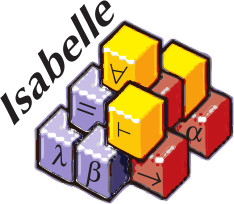Notation
-
Notation can be introduced in Isabelle for both types and terms. Notation for a constant can be introduced where it is defined, later with an explicit notation (
type_notation,notation), or locally in an Isar proof (write). This is documented in isar-ref §8.2 §8.3. -
Assigning correct priorities in mixfix declarations is crucial for avoiding syntactic ambiguities. Prefer to use templates (like
infix,infixl,infixrfor binary operators)! -
Use print modes (documented in isar-ref §8.1.3) to define notation that is only meant for convenient
input, or specific output scenarios (ASCII,latex). -
When introducing notation that you consider standard or folklore, add a comment with a reference to some textbook, paper or Wikipedia entry to back your claim.
-
If you introduce new notation, put it into a bundle!
-
Bundles are documented in isar-ref §5.3. They can be either activated in a local theory context (
unbundle), in an Isar proof body (include), in a proof refinement (including), and in a context specification (includes) (notably forcontextand longtheoremstatements). -
An example can be found in
HOL-Analysis.Finite_Cartesian_Product(vec_syntax,no_vec_syntax) -
A bundle can be unbundled on the toplevel only when the notation is specific enough (e.g. by a subscript) to rule out clashes with notation from other theories or future developments. A bundle for disabling the notation must be available regardless.
-
For syntax notations always provide both a bundle that enables it (
CONCEPT_syntax) and a bundle that disables it (no_CONCEPT_syntax), e.g.:
-
bundle timecredits_syntax
begin
notation
timecredit_assn ("$")
end
bundle no_timecredits_syntax
begin
no_notation
timecredit_assn ("$")
end
